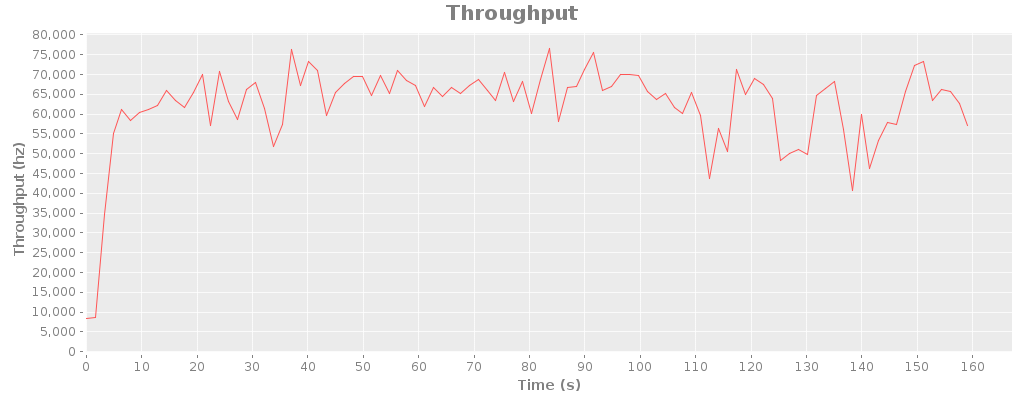I’ve been discussing Jepsen and partition tolerance with Peter Bailis over the past few weeks, and I’m honored to present this post as a collaboration between the two of us. We’d also like to extend our sincere appreciation to everyone who contributed their research and experience to this piece.
Network partitions are a contentious subject. Some claim that modern networks are reliable and that we are too concerned with designing for theoretical failure modes. They often accept that single-node failures are common but argue that we can reliably detect and handle them. Conversely, others subscribe to Peter Deutsch’s Fallacies of Distributed Computing and disagree. They attest that partitions do occur in their systems, and that, as James Hamilton of Amazon Web Services neatly summarizes, “network partitions should be rare but net gear continues to cause more issues than it should.” The answer to this debate radically affects the design of distributed databases, queues, and applications. So who’s right?
In response to my earlier post on Redis inconsistency, Antirez was kind enough to help clarify some points about Redis Sentinel’s design.
Previously in Jepsen, we discussed Riak. Now we’ll review and integrate our findings.
This was a capstone post for the first four Jepsen posts; it is not the last post in the series. I’ve continued this work in the years since and produced several more posts.
We started this series with an open problem.
Previously in Jepsen, we discussed Redis. In this post, we’ll see MongoDB drop a phenomenal amount of data. See also: followup analyses of 2.6.7 and 3.4.0-rc3.
MongoDB is a document-oriented database with a similar distribution design to Redis. In a replica set, there exists a single writable primary node which accepts writes, and asynchronously replicates those writes as an oplog to N secondaries. However, there are a few key differences.
First, Mongo builds in its leader election and replicated state machine. There’s no separate system which tries to observe a replica set in order to make decisions about what it should do. The replica set decides among itself which node should be primary, when to step down, how to replicate, etc. This is operationally simpler and eliminates whole classes of topology problems.
This article is part of Jepsen, a series on network partitions. We’re going to learn about distributed consensus, discuss the CAP theorem’s implications, and demonstrate how different databases behave under partition.
Previously on Jepsen, we explored two-phase commit in Postgres. In this post, we demonstrate Redis losing 56% of writes during a partition.
Redis is a fantastic data structure server, typically deployed as a shared heap. It provides fast access to strings, lists, sets, maps, and other structures with a simple text protocol. Since it runs on a single server, and that server is single-threaded, it offers linearizable consistency by default: all operations happen in a single, well-defined order. There’s also support for basic transactions, which are atomic and isolated from one another.
Because of this easy-to-understand consistency model, many users treat Redis as a message queue, lock service, session store, or even their primary database. Redis running on a single server is a CP system, so it is consistent for these purposes.
Previously on Jepsen, we introduced the problem of network partitions. Here, we demonstrate that a few transactions which “fail” during the start of a partition may have actually succeeded.
Postgresql is a terrific open-source relational database. It offers a variety of consistency guarantees, from read uncommitted to serializable. Because Postgres only accepts writes on a single primary node, we think of it as a CP system in the sense of the CAP theorem. If a partition occurs and you can’t talk to the server, the system is unavailable. Because transactions are ACID, we’re always consistent.
Right?
Riemann 0.2.0 is ready. There’s so much left that I want to build, but this release includes a ton of changes that should improve usability for everyone, and I’m excited to announce its release.
Version 0.2.0 is a fairly major improvement in Riemann’s performance and capabilities. Many things have been solidified, expanded, or tuned, and there are a few completely new ideas as well. There are a few minor API changes, mostly to internal structure–but a few streams are involved as well. Most functions will continue to work normally, but log a deprecation notice when used.
I dedicated the past six months to working on Riemann full-time. I was fortunate to receive individual donations as well as formal contracts with Blue Mountain Capital, SevenScale, and Iovation during that time. That money gave me months of runway to help make these improvements–but even more valuable was the feedback I received from production users, big and small. I’ve used your complaints, frustrations, and ideas to plan Riemann’s roadmap, and I hope this release reflects that.
The Netty redesign of riemann-java-client made it possible to expose an end-to-end asynchronous API for writes, which has a dramatic improvement on messages with a small number of events. By introducing a small queue of pipelined write promises, riemann-clojure-client can now push 65K events per second, as individual messages, over a single TCP socket. Works out to about 120 mbps of sustained traffic.

I’m really happy about the bulk throughput too: three threads using a single socket, sending messages of 100 events each, can push around 185-200K events/sec, at over 200 mbps. That throughput took 10 sockets and hundreds of threads to achieve in earlier tests.
In the previous post, I described an approximation of Heroku’s Bamboo routing stack, based on their blog posts. Hacker News, as usual, is outraged that the difficulty of building fast, reliable distributed systems could prevent Heroku from building a magically optimal architecture. Coda Hale quips:
Really enjoying @RapGenius’s latest mix tape, “I Have No Idea How Distributed Systems Work”.
Coda understands the implications of the CAP theorem. This job is too big for one computer–any routing system we design must be distributed. Distribution increases the probability of a failure, both in nodes and in the network itself. These failures are usually partial, and often take the form of degradation rather than the system failing as a whole. Two nodes may be unable to communicate with each other, though a client can see both. Nodes can lie to each other. Time can flow backwards.
For more on Timelike and routing simulation, check out part 2 of this article: everything fails all the time. There’s also more discussion on Reddit.
RapGenius is upset about Heroku’s routing infrastructure. RapGenius, like many web sites, uses Rails, and Rails is notoriously difficult to operate in a multithreaded environment. Heroku operates at large scale, and made engineering tradeoffs which gave rise to high latencies–latencies with adverse effects on customers. I’d like to explore why Heroku’s Bamboo architecture behaves this way, and help readers reason about their own network infrastructure.
To start off with, here’s a Rails server. Since we’re going to be discussing complex chains of network software, I’ll write it down as an s-expression:
